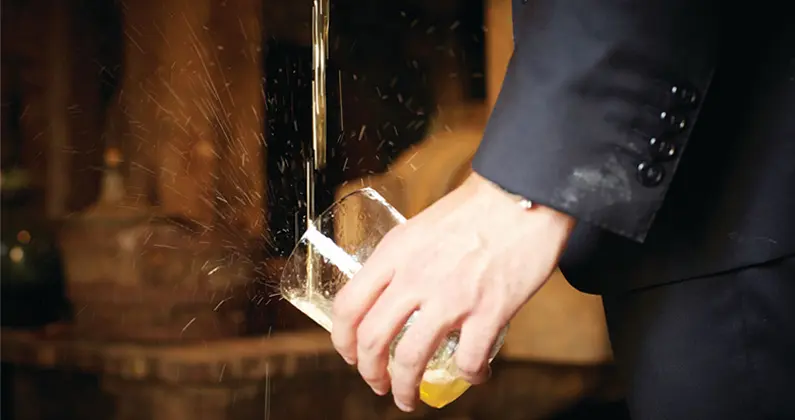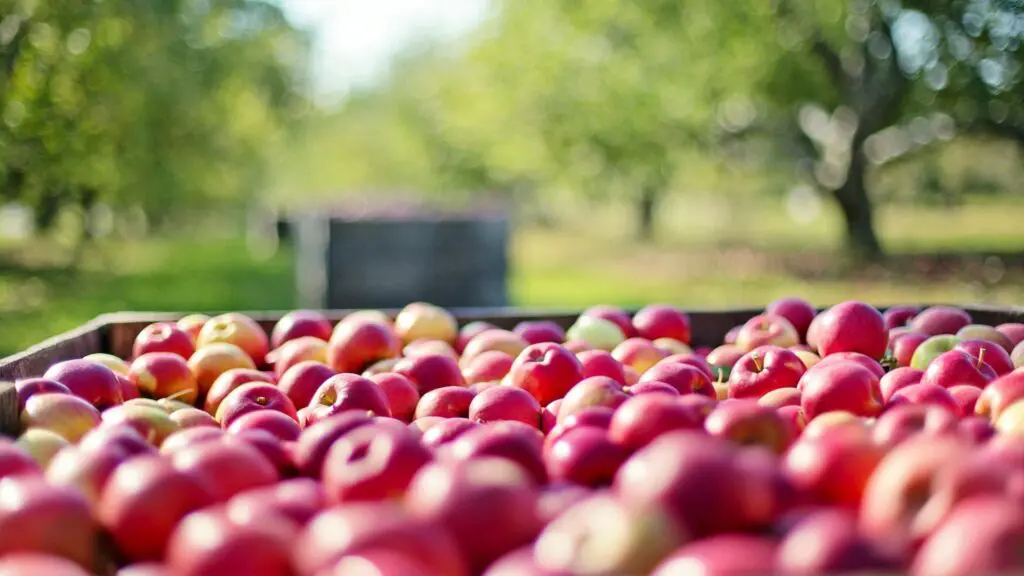Imagine yourself for a minute sitting in a Spanish sideria (a cider-centered restaurant), enjoying some cider and tapas with friends. The escansiador, the fellow whose job it is to serve your cider, seems to know instinctively when you need a little more.
He appears at your table, takes up the bottle in one hand and a glass in the other, raises the bottle gracefully over his head, and while looking off into the middle distance, begins the pour. The stream of cider falls many feet, catching the edge of the glass just so, then swirling to the bottom. He hands the glass to you when it has just the right amount, then moves quietly on to the next.
This is known as the long pour. Done well it seems effortless and elegant. What’s more, the aeration added by the swirling action against the side of the glass actually makes the cider taste better, fresher and more lively. Wouldn’t it be cool to be able to pour cider like that?
Well, with a little practice, you can! To get your long pour going, start by collecting a few things.
First, you’ll need a bottle.
An empty 700-milliliter Spanish sidra bottle would be your first choice, but any 750-milliliter wine bottle will do. Next up is a glass. Over the centuries, the Spanish have developed a glass just for cider — wide at the top and tapering in just a bit toward the bottom, made of material so thin that with the finest ones they say you can’t even feel the glass at your lips as you sip. You can find something pretty similar online at various places, but an ordinary pint glass will do well enough, at least while you’re just getting started.
You’ll want to practice with water (why waste good cider!) and it can get messy while you’re learning, so if you can’t get outside, work over a large basin or even your bathtub. Stand with your feet maybe ten inches apart. Hold the glass in one hand with your arm fully extended down (but don’t lock your elbow) with the top of the glass facing away from you at an angle. The glass should be reasonably close to your body, maybe five inches out.
Stretch out your arms and pour.
With the water-filled bottle in your other hand, raise it over your head, again with your arm almost fully extended. “First position the bottle where you want it,” suggests Scott Heath, co-owner and cidermaker at Tilted Shed Ciderworks in Windsor, California, whose annual txotx celebration is one of the highlights of the local calendar. “Tilt the bottle and get the cider almost to the opening, then look down at the glass — not at the cider. Slowly and evenly tip the bottle, moving the glass as needed, hopefully not much, to catch the stream. I think of it kind of like rubbing your belly and patting your head at the same time; your arms are doing two different things. It’s awkward at first, but you can coordinate.”
“The key for me was establishing a repeatable motion,” says Mike Reis, co-owner of Redfield Cider Bar in Oakland, California, where everyone on staff does a long pour for customers that order one of the many Spanish sidras and Spanish-inspired American ciders on offer there. Ideally “your raised arm and the glass are always in the same position.”
Remember, too, that you want the cider to hit the side of the glass so that it swirls and gets that all important aeration. As you practice you’ll figure out the ideal angle for the glass. You should also pour only two to three fingers worth of liquid, just enough that it can be swallowed in a couple of gulps while it still has a little fizz. Take too much time to drink it and, say the Spanish, the cider will be “dead.”
That’s all there is to it. That and a lot of practice, of course. But once you have it down, you’ll be the envy of your friends. “Besides,” says Jeff Cottrell, long-time Spanish sidra steward at the Great Lakes Cider and Perry Competition in Grand Rapids, Michigan. “The long pour is fun!”





















